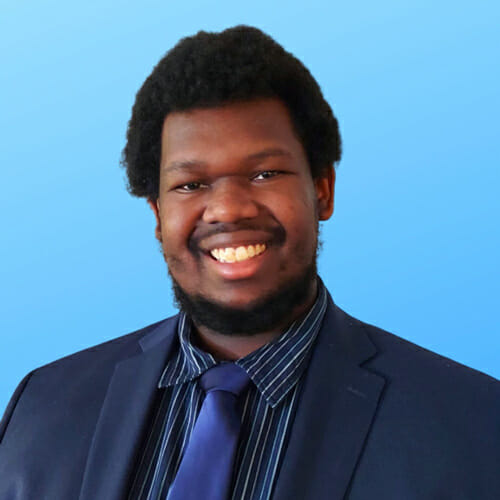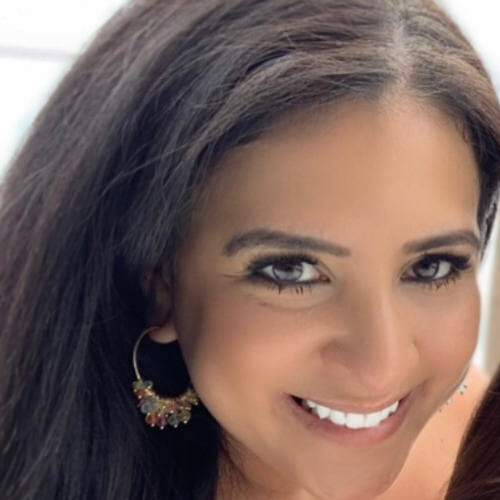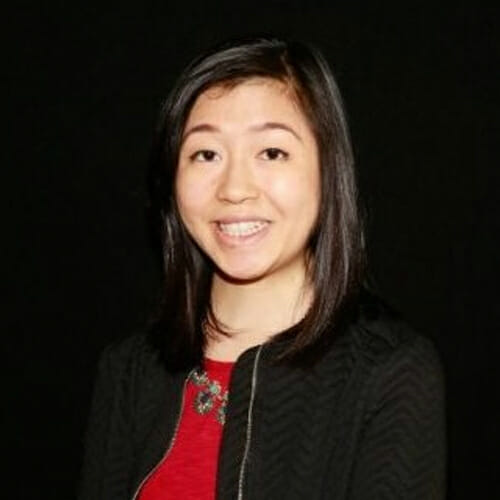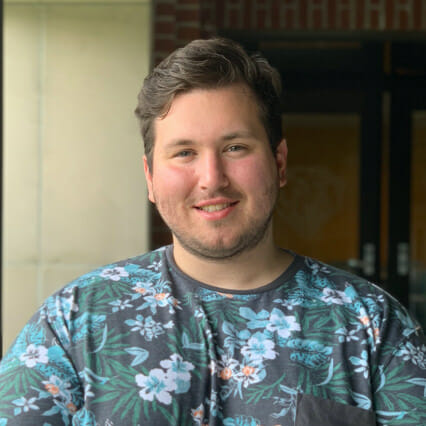
Co-Written by:
Kinsley McNulty, Program Coordinator of Student Life, New York Institute of Technology
Diandra Macias, Program Coordinator of Student Life, New York Institute of Technology
Samantha Mon, Assistant Director of Career Services, New York Institute of Technology
Paul Ferrante, Assistant Director of Student Life, New York Institute of Technology
This past year, the global pandemic and the Black Lives Matter movement shed a bright light on continued inequities while spurring expectations of social justice and activism that define Gen Z. Young people are demanding accountability by police, government, corporate leaders, and educational institutions, including higher education. In 2018, New York Institute of Technology developed a Diversity, Equity, and Inclusion (DEI) Task Force of staff, faculty, and students to assess and make recommendations to institutional policies, resources, and structures. In many ways, New York Tech is still new to ingraining the nuances into practice and our diverse community.
Meanwhile, students voiced their experiences throughout the pandemic, showing a greater need for the student affairs division (Student Life, Career Services, Counseling and Wellness, Experiential Education) to prioritize DEI-centered programming and advocacy. We know our need is not insular— colleges across the country feel the need for DEI now. However, without a formal DEI office on campus, the 2019-2020 academic year left us with the question: how can we create a plan of action that is ambitious, responsible, and foundational for long-term institutional change? Our student affairs staff members are not diversity experts, so developing and implementing a DEI plan on a campus-wide scale presented a daunting task. When creating a student affairs DEI plan without a DEI office, three things became critical from the outset:
- Understanding student need and impacts on their sense of belonging and inclusion
- Creating programming that was relevant and centered on the student experience
- Developing sustainable programs with longevity in mind
However, without a formal DEI office on campus, the 2019-2020 academic year left us with the question: how can we create a plan of action that is ambitious, responsible, and foundational for long-term institutional change? Our student affairs staff members are not diversity experts, so developing and implementing a DEI plan on a campus-wide scale presented a daunting task.
Titles and direct experience aside, we knew it was our responsibility as the Office of Student Life to do what we could to engage the campus community with these priorities in mind and make DEI a more fundamental value throughout all facets of our campus life.
Getting Started: Initial Steps
Prior to the beginning of the pandemic, the institution started to grow its DEI efforts. After a series of conversations about the need to address DEI issues in the workplace and academic spaces, the Offices of Student Life and Career Services came together in January 2020 to start mapping out a few trial programs. To ensure our programs would be relevant to the needs of the student body, we began by asking two main questions: Who makes up our current student demographic, and which inequities are our students facing on and off campus? This focus on student identity led us to look at issues pertaining to race, gender, class, sexuality, accessibility, and student status. By first collaborating with a diversity recruiter from a leading tech company to discuss the need to foster authentic inclusivity in the workplace and college environment, we were able to more intentionally engage students on DEI issues. Following the feedback from this initial set of programs, we identified three key areas to drive the course of our new DEI plan for the upcoming academic year:
- Research to build knowledge and awareness to inform the process of developing goals.
- Identify how to deliver the program and collaborate with internal and external partners.
- Provide clear and concise communication for all New York Tech stakeholders.
To build our DEI plan and set goals, we determined it was important to first educate ourselves on racism, social justice, advocacy, and intersectionality, and to explore our own identities while interrogating structures of power and institutions. We recognized that quick ways to provide DEI education and professional development for staff can include:
- Considering how you can tap into the expertise of your community in terms of organizational learning, education, and professional development. This may include asking your human resources department to provide DEI educational offerings.
- Organizing a staff retreat with external experts to engage staff in conversations around diversity and inclusion to help establish areas of knowledge and areas to grow in.
- Leveraging LinkedIn and other professional development networks (i.e., NASPA Facebook pages) to contact changemakers doing DEI work inside and outside of higher education.
- Hosting focus groups and holding candid conversations on student needs for support.
- Seeking out books, articles, podcasts, certification courses, etc., to self-educate.
In our case, during Student Life’s annual summer retreat, a special focus was placed on DEI. This retreat included facilitated discussion on the book Between the World and Me by Ta-Nehisi Coates, as well as how to actively identify bias, discrimination, and create spaces for different communities on campus. Education and research will be uncomfortable for many, but it is part of the growth process. Beyond this retreat, we also researched how to effectively hold conversations around critical topics. For example, we referred to the “Five D’s” model for developing cross-campus dialogue, highlighting differences between Disengagement, Discussion, Dialogue, Debate, and Dictation. We also examined the Social Change Model in conversations and in creating broader programming. Resources like these helped us to develop the right goals for our DEI programs.
We also used this information to assess our past programs, seeing what could be improved and what needed to be created. Using data on our students’ demographics as well as their laser focus on academic and career success, and comfort level with discussing identity across campus, we developed the following programming goals:
- Celebrate student diversity.
- Provide opportunities for career, leadership education, and development.
- Create spaces for open dialogues.
What surprised us in early assessments of our work was feedback from students requesting more agency in the direction of our programs. As a result, we began integrating student input earlier on in the planning process with each goal—such as in developing program topics, suggesting speakers, and moderating more panels—to allow them to drive change across each of our New York campuses.
Delivery and Collaboration
After setting goals, it is vital to establish how—and by whom—these programs would be delivered to make DEI part of the institutional culture. First, we started at home base: are there faculty, staff, or alumni knowledgeable within the areas we want to present and hold discussions on? Next, we looked at our professional networks to identify a diverse group of speakers and panelists. From there, we started to build a large and diverse network of speakers to offer different perspectives and experiences. Here are practical ideas for how you can select collaborators and vet speakers on a given topic:
- Determine the learning outcomes of your event. What takeaways and practical changes do you want the audience to leave with?
- Review evaluation surveys, conduct research, and collect data. What is the racial, ethnic, gender, and expertise makeup of your attendees and speakers? What topics have already been covered at past events and meetings, and to what extent?
- Determine the challenges attendees might be facing that the event aims to address. What format and level of nuance will best benefit the audience?
- Cast a wide(r) net. What systemic barriers hold back people of underrepresented identities from being recognized as experts? Which proven networks can you lean into to source a diverse lineup of speakers?
We noted the most relevant departments to bring into the planning process, external experts to invite and solicit feedback from, and logistics for marketing and event facilitation. Without multiple avenues for input and opportunities for meaningful involvement, your DEI plan may never get off the ground. Consider the following constituent groups when organizing your campus engagement strategy:
- Student services, such as Career Services, International Student Services, Experiential Education, Counseling & Wellness, Academic Advising, and Alumni Relations.
- Faculty across all disciplines, including faculty senate members and department chairs.
- Undergraduate and graduate student leaders.
- Staff committees, advisory groups, and task forces that inform priorities and processes.
- Campus partners that most students don’t interact with, such as Legal Services.
By involving the institution’s marketing team, as well as partnering with other departments, we increased the visibility of our programming. One such example of the benefits of cross-departmental collaboration was our partnership with Alumni Relations. In addition to bringing a multigenerational student perspective to our programs, these collaborations led to outreach from New York Tech alumni asking to partner on a new DEI series event on Disability and Universal Design. Collaborations also created opportunities for students to receive academic, career, mental health, and civic engagement information during a single event. This allowed us to show the relevance of DEI while avoiding an overload of programs that would feed into Zoom fatigue.
Lastly, consider what areas your DEI plan will be covering as well as what you and your staff can manage. New York Tech has two campuses in New York, so our plan needed to be cohesive and accessible between the campuses. Prior to the start of our DEI program, we had a strong foundation of providing celebration and recognition programming for history and heritage months throughout the academic year. Our question was how could we build off this and which pathway should we take? We recommend starting small—maybe what works for your campus would be actively acknowledging history, heritage, and awareness months with intentionality; through the year, review your programs and see how you can build off what you’ve previously provided. Your DEI plan will not come together overnight; it takes time, education, and engagement to be fully operating.
Celebration and Recognition
We wanted to continue to highlight the diversity of New York Tech campuses; however, with COVID-19 guidelines, we needed to adapt to a virtual or passive programming model. During the summer of 2020 and throughout the academic year, as a staff, we researched the history of cultures, significance of holidays, systemic or institutional racism, and discrimination from various cultural, religious, and other identity-based groups. In particular, we identified that we needed to do more work with understanding the Native American and Indigenous identity, so we partnered with a local community organization that provided insight on the history of the culture and identity and how we could bring this to our campus. Throughout the year, we also raised awareness of different holidays and awareness months, shared their cultural and historical contexts, and highlighted members of the New York Tech community. Students were then able to save and re-share content with others. In cases where student groups already maintained traditions of celebrating these types of events, we focused more on supporting the marketing and logistics of their efforts.
DEI Series
In order to continue creating programs linking DEI with career and leadership development opportunities, the Office of Student Life once again partnered with the Office of Career Services to develop what we now call our DEI Series. Under the DEI Series umbrella, we collectively decided to present different topics through keynotes, workshops, and panel discussions in hopes of making abstract topics accessible and easy to understand. With each program, our goal was to educate and equip students with potential action items to press deeper into topics relevant to their everyday lives.
At the same time, this mixed format allowed us to develop programs that challenged students to think critically and consider their role in creating a world where challenges with diversity, equity, and inclusion no longer exist. Throughout the 2020-2021 academic year, we tackled topics such as career development for first-generation students, medical racism, support for international students, and LGBTQ+ rights, activism, and organizing. In addition to choosing topics relevant to your campus, we’d strongly recommend including interactive components into the programs, such as Q&A sessions and breakout rooms/small group discussions, to keep the attendees engaged. We also recommend inviting student leaders to moderate these events to empower students in leading these conversations to create opportunities for their personal and professional growth. Lastly, we asked some speakers to have private conversations with student leaders to talk more candidly about activism and civic engagement.
Open Dialogue Series
With the tragic deaths of Breonna Taylor, George Floyd, Ahmaud Arbery, and many others, coupled with the increase in Black Lives Matter protests throughout the country, our Office of Student Engagement spearheaded an Open Dialogue session in June 2020 to provide a virtual space for the New York Tech community to share their reactions. During this first session, a faculty member provided education on topics surrounding diversity, equity, and inclusion, as well as introduced new concepts and structures surrounding the Black Lives Matter movement and social injustice. For the academic year, each dialogue was co-facilitated by two student life professionals to more easily mediate the difficult topics, address inappropriate comments, and manage technology. Hosting dialogues on a biweekly basis created a consistent, low-pressure space for the students to speak their minds and process their experiences. Students started to openly express their concerns, frustrations, and perspectives, and there was an increased sense of vulnerability when starting a dialogue with fellow students and staff members. While we normally used photos and videos from current events as conversation starters for preset topics, students often controlled the flow of conversation, and we often changed topics to address student events and new needs.
Communication
Partnering with New York Tech’s communications department enabled us to strategize on creating marketing that was purposeful and supportive, driving home the values of the DEI programming. These marketing and communications pieces included email invitations, event calendar posts, articles for the school blog, and social media marketing. When developing these pieces, we approached each component of informing and educating our community as a smaller step to a larger goal— to transform the institutional culture surrounding diversity, equity, and inclusion. Key takeaways we learned during this collaboration with communications staff included:
- Maintaining a close relationship with the institution’s communications team ensures messaging is consistent, authentic, and intentional, especially in regards to sensitive subject matters.
- Listening to students, staff, and faculty about what they expected out of communications about DEI can help guide both the content and methods for our programs.
- The most powerful, authentic messaging can come directly from attendees, so videos, interviews, and testimonials with photos provide a richer way to communicate DEI efforts and impact.
- Integrating DEI into all marketing efforts involves considering all aspects of diversity in decisions about whose stories are being told—from intellectual disciplines to gender, race/ethnicity, age, citizenship to religion, political perspectives, and more.
Reception and Outcomes
When launching our DEI plan, we initially feared how the virtual format would impact attendance and learning outcomes. However, our DEI programming arguably became some of our most consistently attended and engaged programs for the year. Moving forward, we hope to establish formal systems for assessing our progress so that we can develop programs with longevity in mind. The following set of metrics would help determine the impact we are making to educate and equip our community to address DEI issues: program implementation milestones met; action-specific outcomes; learning outcomes; attendee demographics; and campus climate data—baseline and change (e.g., student, faculty, and staff assessment of institutional commitment to DEI; student, faculty, and staff feelings of affirmation and discrimination). Thus, we plan to work with Institutional Research and Academic Technology Services in the upcoming year to gather more robust data and use the results to inform future decisions. When you are first getting started, here are three measures that could help you track the impact of a DEI plan:
- Increased student, staff, faculty and alumni participation/attendance.
- Improvement of representation (in topics and internal/external speakers) more broadly, including race/ethnicity, gender, and other DEI areas.
- Expressed student, staff, and faculty satisfaction with overall campus climate/workplace environment in relation to events, communication, engagement, and recognition.
These measures will allow you to understand the current state of your institution, identify strengths/gaps/needs relevant to the university priorities, and set benchmarks to improve your ability to reach DEI goals. As you progress through your DEI efforts, additional success measures to consider include: increased diversity in recruitment, hiring, and retention of faculty, staff, and students; increased awareness and utilization of professional development tools and resources; increased support of research innovation and scholarship/grants opportunities on DEI; and improved mechanisms for reviewing practices and supporting data assessment. Regardless of the metrics you establish, it is important to strive for transparency and accountability, seeking input from students, staff, faculty, alumni, data experts, and other community members to inform decisions and changes in your evaluation and assessment work.
Campus Impact
By the end of the year, we collected qualitative, self-reported data about program experiences to evaluate student knowledge and awareness. Some learning outcomes students reported included: recognizing the relationship between current DEI-related issues and U.S. history, institutions, practices, and policies; understanding the roots of individual cultural values and prejudices and how they influence behavior; understanding how to navigate the workforce with “insider knowledge” and skills needed to succeed after graduation; and reassessing one’s own perspective when appropriate and listening while withholding judgment about the new or unfamiliar. Following this question, we also asked students, “What is one action you will take as a result of attending this session?” to gauge how they will put learned information into action. One student stated, “Now that election season has ended, I will become more civically engaged outside of voting. I will use the framework that [the keynote speaker] shared to identify an issue that I deeply care about and organize a grassroots campaign in my local community.”
In addition to the feedback gained directly from our students, we measured our success in impacting the campus on a structural, resource, and policy level by garnering feedback from other departments across New York Tech. The DEI Series and Open Dialogues, for example, gave members of the DEI Task Force a chance to hear how students were responding to different issues, as well as student recommendations for improving the culture and structures at New York Tech. We also began to see more DEI programming integrated throughout campus-wide initiatives, and requests to aid other departments with integrating a DEI lens into their work.
Work Towards Longevity
It is important to remember that we are not acting alone in trying to create change. Throughout this year, we’ve seen academic departments and student support services alike work to develop their own plans to address DEI issues within their respective areas. While events are important to engage students on these issues, it is also critical for institutions to create strong DEI policies and resources as the backbone of their efforts to foster long-term change and a culture of inclusive excellence. Since its operation, for example, our DEI Task Force expanded its policy to be more inclusive of LGBTQ+ students, made changes to the cultural holidays observed by the institution, and advocated for the creation of an executive-level position focused on DEI, a role now filled by the newly appointed Vice President for Equity and Inclusion. As noted at the beginning, long-term change is created through the administration, staff, faculty, and students working together. With collaboration and focus on creating a better environment for students to thrive as changemakers, we look forward to seeing how they continue their growth as the leaders of tomorrow.
 Kinsley McNulty is the Program Coordinator for the Office of Student Engagement at New York Institute of Technology’s NYC Campus. Kinsley graduated from Yale University with a Bachelor of Arts in Ethnicity, Race, and Migration in 2018. He is currently pursuing a Masters of Arts in Student Affairs Administration from Michigan State University.
Kinsley McNulty is the Program Coordinator for the Office of Student Engagement at New York Institute of Technology’s NYC Campus. Kinsley graduated from Yale University with a Bachelor of Arts in Ethnicity, Race, and Migration in 2018. He is currently pursuing a Masters of Arts in Student Affairs Administration from Michigan State University.
 Diandra Macias is the Program Coordinator for the Office of Student Engagement at New York Institute of Technology’s Long Island Campus. Diandra graduated from Monmouth University with a Bachelor of Arts in Communication and later received a Master’s of Science in School Counseling from New York Tech. Diandra is a proud sister of Delta Phi Epsilon and former Chapter President of Chi Sigma Iota.
Diandra Macias is the Program Coordinator for the Office of Student Engagement at New York Institute of Technology’s Long Island Campus. Diandra graduated from Monmouth University with a Bachelor of Arts in Communication and later received a Master’s of Science in School Counseling from New York Tech. Diandra is a proud sister of Delta Phi Epsilon and former Chapter President of Chi Sigma Iota.
 Samantha Mon is the Assistant Director of Career Services at New York Institute of Technology (NYC Campus). Prior to joining New York Tech, she worked as Career Counselor and Assistant Director in the Office of Career Education & Professional Development at Teachers College, Columbia University. Sam graduated from Rutgers University with a Bachelor of Arts in Psychology and Biological Sciences, and later received a Master of Arts in Higher and Postsecondary Education from Teachers College, Columbia University.
Samantha Mon is the Assistant Director of Career Services at New York Institute of Technology (NYC Campus). Prior to joining New York Tech, she worked as Career Counselor and Assistant Director in the Office of Career Education & Professional Development at Teachers College, Columbia University. Sam graduated from Rutgers University with a Bachelor of Arts in Psychology and Biological Sciences, and later received a Master of Arts in Higher and Postsecondary Education from Teachers College, Columbia University.
 Paul Ferrante is the Assistant Director for Student Life at New York Institute of Technology, Long Island campus. Paul graduated from Lycoming College with a Bachelor of Arts in Corporate Communications, later received a Master of Arts in Communication Arts from New York Tech and is currently completing his Master of Science in School Counseling from New York Tech. He is an active member of Tau Kappa Epsilon Fraternity and Chi Sigma Iota International Honor Society.
Paul Ferrante is the Assistant Director for Student Life at New York Institute of Technology, Long Island campus. Paul graduated from Lycoming College with a Bachelor of Arts in Corporate Communications, later received a Master of Arts in Communication Arts from New York Tech and is currently completing his Master of Science in School Counseling from New York Tech. He is an active member of Tau Kappa Epsilon Fraternity and Chi Sigma Iota International Honor Society.

